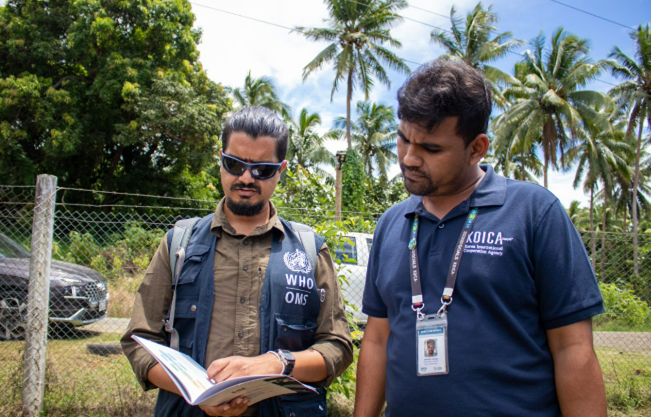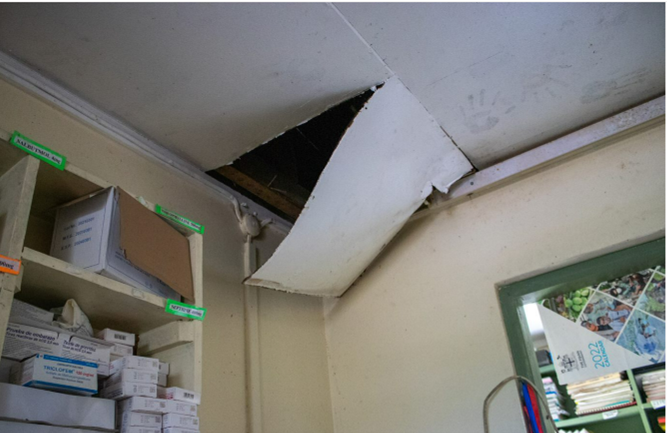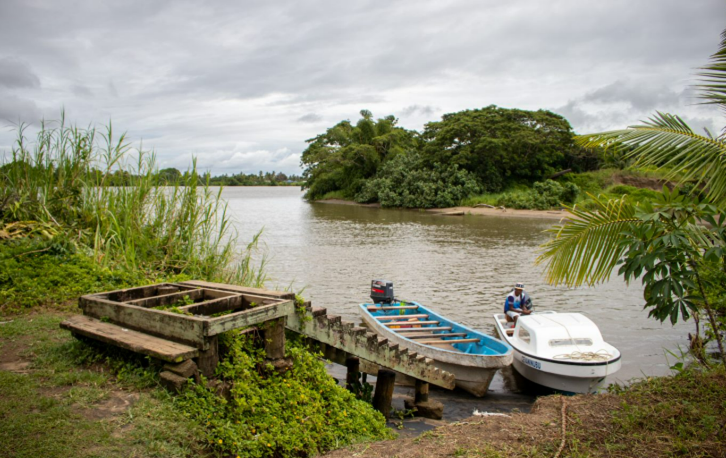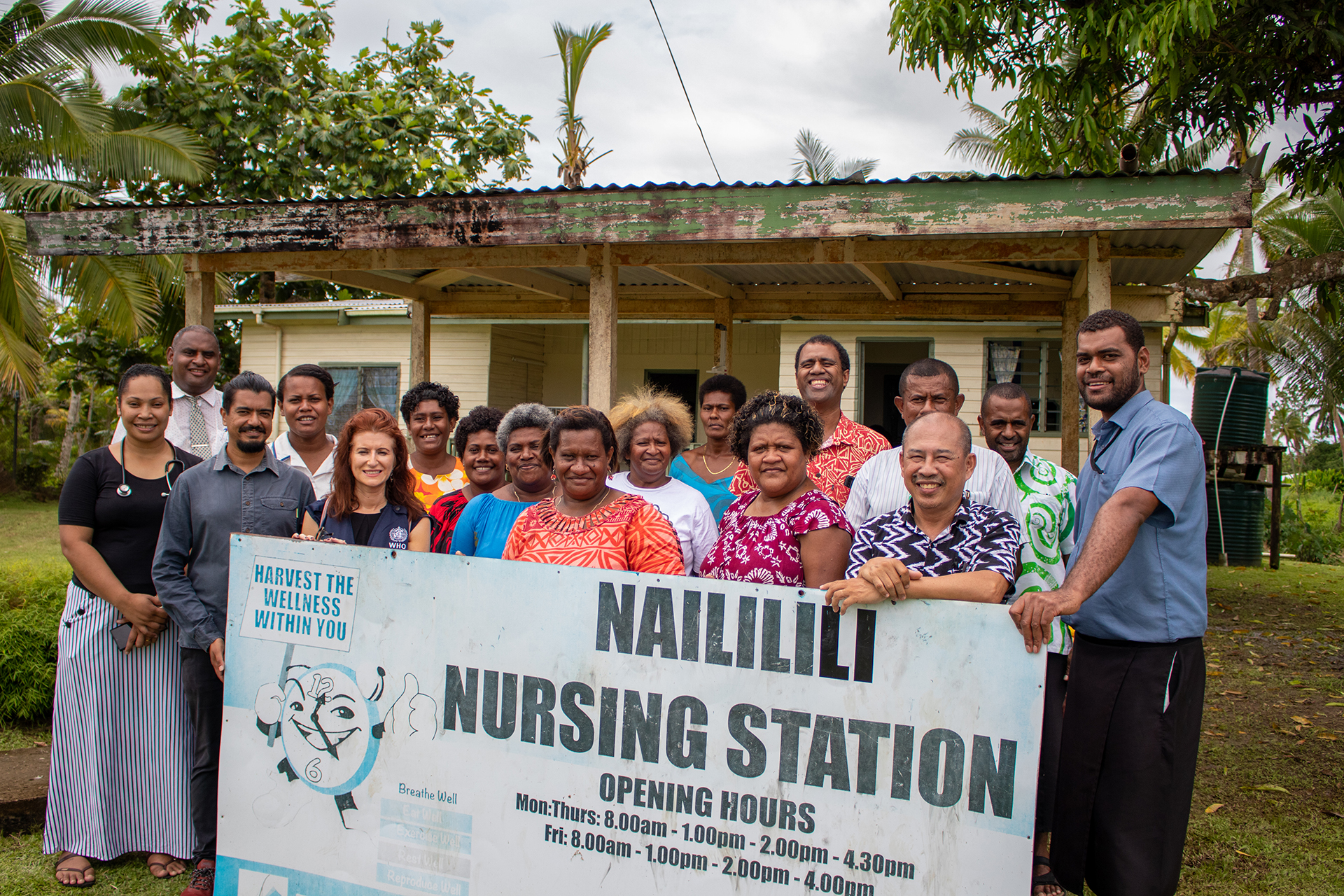Cyclones, flash floods and droughts have exposed the vulnerability of Fiji’s healthcare facilities to climate change over the last few years. In addition, rising sea levels and freshwater flooding are increasingly undermining infrastructure and the safety of drinking water.
As the climate changes, health facilities, healthcare workers, and the patients they serve are all coming under more pressure. Health facilities need to be fit-for-purpose and operational at all times – especially during climate-fuelled disasters and outbreaks when they are needed the most.
Verata Nursing Station, built in 1979, is about an hour from Fiji’s capital city of Suva. It services seven villages and settlements with a total population of between 2,000 and 3,000 people. All of these people are served by the district nurse and seven community health workers (one for each village).
Much has changed in the years since the nursing station’s construction when the location was originally chosen as being convenient for the community. Climate change now means that the facility is at heightened risk due to soil erosion. The medical team is also facing increasing challenges related to accessibility, transportation, resourcing, and the cleanliness of the water, as the area is prone to drought and severe landslides. When there is no rain, the mains water gets cut off and the nursing station must rely on whatever is left in the tanks to cater to patient needs.
Tailevu Subdivisional Nursing Manager Sister Olivia Tuigau (Verata falls under the Tailevu Medical Subdivision) highlights the climate-related challenges involved in delivering quality health services to rural communities – particularly now that the river floods more frequently:
“Access from local villages was originally by boat but climate and infrastructure changes mean that fewer people are coming here than in the past. This means that I must now spend some of my week going out to each village in the area. This can be challenging where quality antenatal and more complex care is required.”

WHO and KOICA staff consult Fiji’s National Guidelines for Climate Resilient and Environmentally Sustainable Health Care Facilities (CRESHCF) at the Verata Nursing Station.
©WHO / Faizza Tanggol
Verata Nursing Station is just one of several health facilities being targeted under a joint project being carried out by the Fijian Ministry of Health and Medical Services, the Korea International Cooperation Agency (KOICA) and the World Health Organization (WHO) to strengthen the Fijian national health system’s resilience to the impacts of climate change.
Under the partnership, over 200 healthcare facilities were assessed during the COVID-19 pandemic to determine which structures are most at risk from climate change. Ten criteria were used to select the healthcare facilities, looking at, among other things, the facility’s workforce, electricity supply, water, sanitation, hygiene, waste management and infrastructure. The selected facilities are now being prioritized for retrofitting and/or relocation to higher ground. Primary health facilities such as the Verata Nursing Station fall under the scope of this work.
Like Verata, Naililili Nursing Station is another primary health facility that will be upgraded through the partnership, with renovation including expansion of the clinic waiting area, improvement of accessibility for people with mobility issues, and enhancement of access to safe water. An hour’s drive from Suva, it sits on the shore of the Nasali River and currently serves over 3,000 people spread across 14 villages.
The renovation work is timely.

Flood damage sustained by Naililili Nursing Station
©WHO / Faizza Tanggol
Anamaria Raicoki, a community health worker under Nailili Nursing District, is already seeing the health impacts of climate change among her patients:
“More and more patients need care with noncommunicable diseases such as Type 2 diabetes due to them eating processed, pre-prepared food rather than growing and cooking their own, as unpredictable weather impacts land use. Many of these patients have mobility issues and struggle with climbing off the boat to the pier as well as with the steps at the front of the nursing station.”

Main access point to Naililili Nursing Station, via Nasali River.
©WHO / Faizza Tanggol
Asthma and typhoid are also quite prominent due to climate change. Asthma – triggered more often as a result of dramatic fluctuations in temperature – and typhoid due to water being contaminated by climate-related flooding.
To address these myriad issues, work is underway to ensure that Naililili Nursing Station will have a new front-facing outpatient waiting area, a ramp beside the stairs to improve access for people with disabilities, men’s and women’s toilets and wash facilities, and a covered walkway from the front gate to the waiting area.
In addition to this work, WHO - with KOICA funding - is also developing training packages for health workers and the community. Those who participate in the training will be armed to carry out climate vulnerability assessments in their own communities, to identify their needs, and to suggest interventions. This will support communities such as Verata and Naililili in building climate resilience into their day to day lives.
The work is valuable – ensuring that health workers and health facilities will be able to continue treating patients even in the face of a changing climate. Fiji is leading the way in driving adaptation work in the health sector and strengthening population-wide resilience to the climate crisis.

WHO, KOICA and nursing staff outside the Verata Nursing Station. Subdivisional Nursing Manager Sister Olivia Tuigau pictured fourth from left.
©WHO / Faizza Tanggol

WHO and Naililili staff and patients outside the Nursing Station. Community Health Worker Anamaria Raicoki pictured second from left, back row
©WHO / Faizza Tanggol




